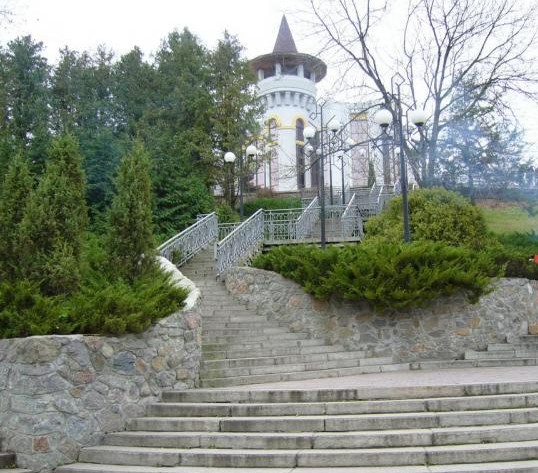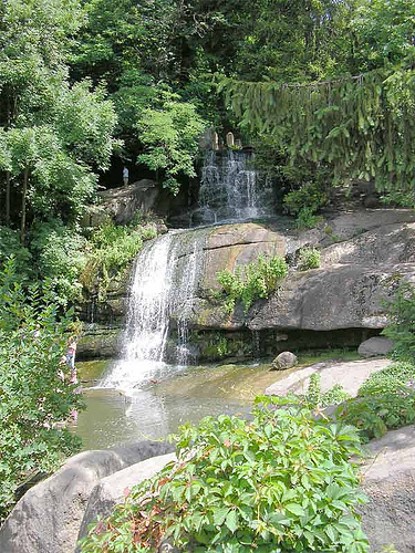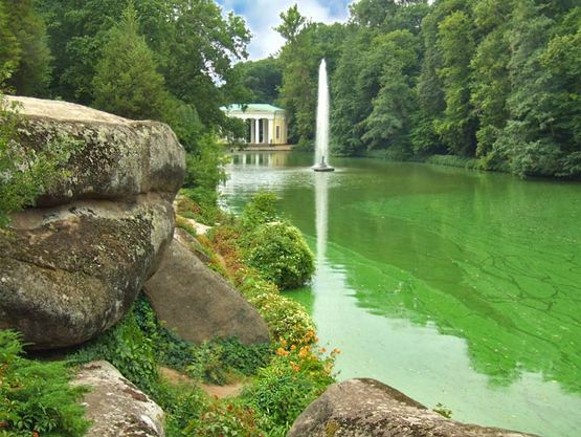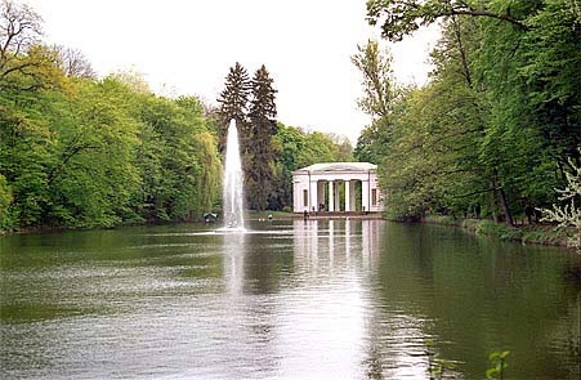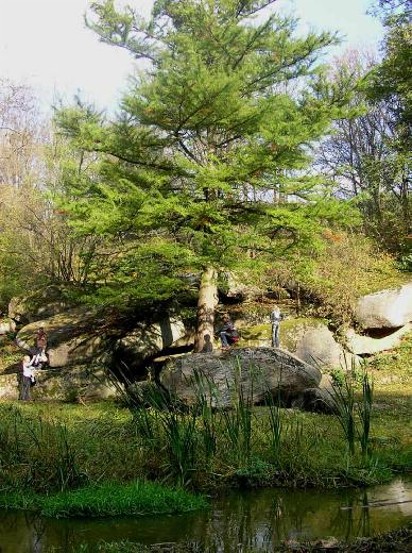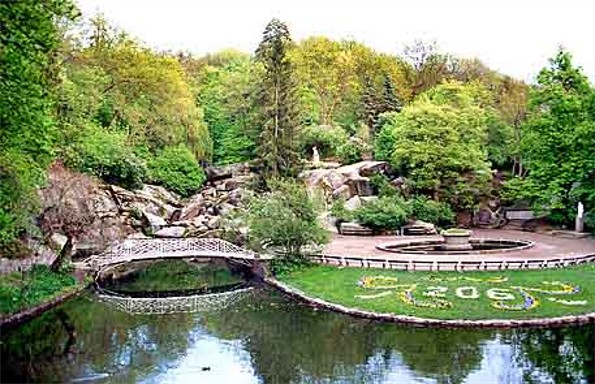Sofiivka Park
Sofiivka Park [Sofijivka]. A dendrological park in Uman, Cherkasy oblast. The park was built by L. Metzel for the Polish count Stanisław Szczęsny Potocki, the voivode of Rus’ voivodeship in 1782–8, who named it after his second wife. It is situated on a picturesque site featuring many ravines and gullies that straddle both sides of the Kamianka River along the outskirts of the city. The construction began in 1796, and by the summer of 1800 the park was ready for public viewing, although work continued on it until 1805. Sofiivka included extensive landscaping to create or enhance grottoes, rock faces, waterfalls, and a system of waterways and lakes. Footbridges, sluice-gates, fountains, sculptures, and buildings were erected throughout the site. As well, a large number of trees—silver spruce, poplar, white pine—were planted in what had previously been a barren area to create the Dubnyk, Hrybok, and Zvirynets forests within the complex.
After Potocki died in 1805, possession of the property passed to his brother, who took no interest in its development or maintenance. In 1831, following the Polish Insurrection of 1830–1, the estate and its park were confiscated, and given by the Russian tsar Nicholas I to his wife. The site then became commonly known as the Empress's Park (Tsarytsyn sad) until 1859, when it was turned into a school for orchard growing. At that time a host of new architectural features were added. In 1899 the park was put under the administration of V. Pashkevych, who introduced foreign tree varieties and developed the site as an arboretum. The park was declared a state nature preserve in 1929, and its historic name was restored in 1946. In 1955 Sofiivka was put under the jurisdiction of the Academy of Sciences of the Ukrainian SSR (now NANU). It houses nearly 500 local and imported varieties of trees and shrubs and is an important center of the National Botanical Garden for introduction and acclimatization research.
[This article originally appeared in the Encyclopedia of Ukraine, vol. 4 (1993).]
